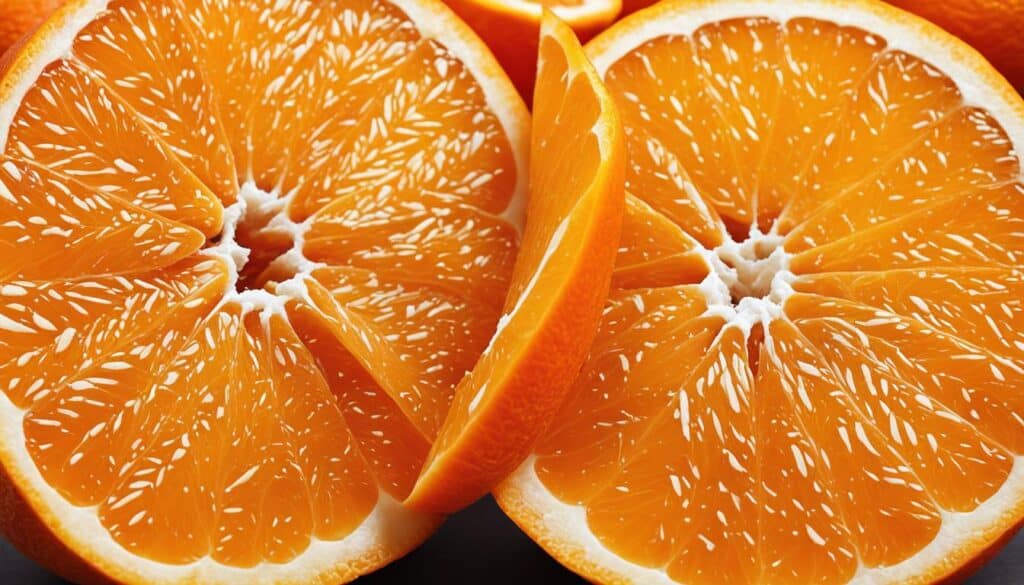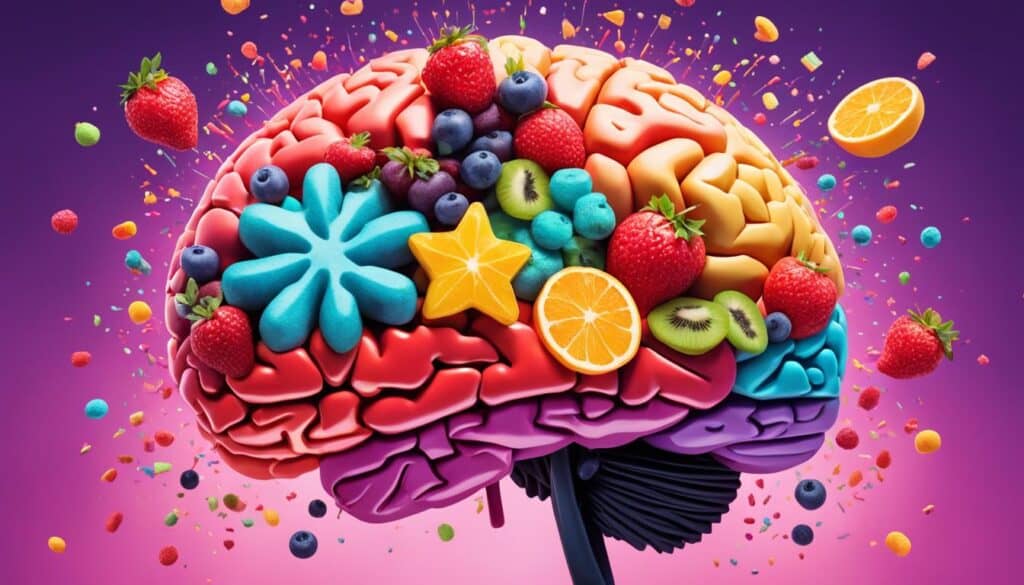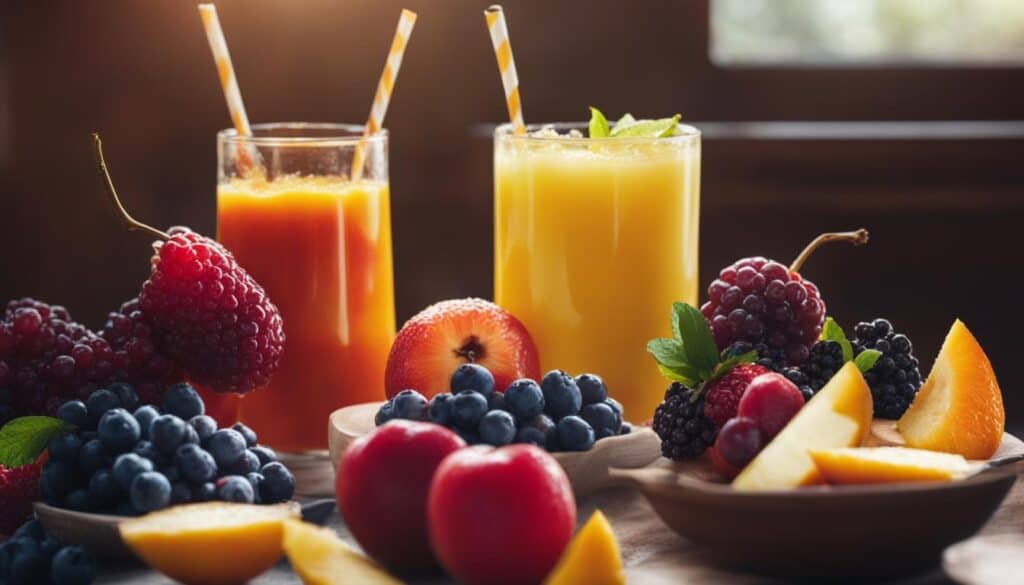Fruit has always been praised as a healthy snack and an essential part of a balanced diet. But have you ever wondered if it really fills you up? As someone who has extensively studied the satiating effects of fruit, I am here to uncover the secrets behind incorporating this delicious gift of nature into your diet.
The Role of Fiber in Fruit
One of the reasons fruit can make you feel full is its high fiber content. Fiber is known to keep hunger levels in check and promote a feeling of fullness. Fruits that are particularly high in fiber include:
- Berries
- Apples
- Pears
- Oranges
These fiber-rich fruits can help regulate appetite and prevent overeating.
The Benefits of Fiber in Fruit
Fiber is an essential component of a healthy diet and plays a crucial role in supporting digestion and overall well-being. When it comes to satiety, fiber adds bulk to your meals, promoting a feeling of fullness and preventing excess calorie consumption.
Moreover, fiber slows down the digestion process, allowing for a gradual release of nutrients and helping to stabilize blood sugar levels. This steady energy release can prevent sudden hunger cravings and aid in weight management.
Fiber-rich Fruits for Satiety
Here are some details about a few high fiber fruits:
| Fruit | Fiber Content (per serving) |
|---|---|
| Berries | 6-8 grams |
| Apples | 4 grams |
| Pears | 5 grams |
| Oranges | 3 grams |
Including these high fiber fruits in your diet can help you feel fuller for longer and support your overall satiety needs. Remember to aim for a variety of fruits throughout the day to benefit from a diverse range of nutrients and fiber content.
Remember, when it comes to fruits and fiber, variety is key. Experiment with different fruits and find the ones that make you feel the most satisfied!
The Impact of Fructose in Fruit
While fruit can provide satiety and be a nutritious addition to your diet, it’s important to be aware of the impact of fructose, a type of sugar found in fruit. Fructose malabsorption can cause bloating and digestive issues in some individuals, making it essential to understand your individual tolerance and adjust your fruit consumption accordingly.
Fructose, although natural and present in many fruits, can be challenging for certain people to digest and absorb efficiently. This can lead to discomfort, bloating, and other digestive problems after consuming fruit. If you experience these symptoms, you may have fructose malabsorption, and it’s crucial to be mindful of the types and amounts of fruit you consume.
An individual’s tolerance to fructose can vary, and finding the right balance is key. Some low-FODMAP fruits, such as berries and kiwi, may be better tolerated by those with fructose malabsorption. It’s also helpful to note that fructose is often better absorbed when consumed together with glucose, which is naturally present in fruit and can aid in its digestion.
Listening to your body and paying attention to how different fruits affect your digestive system can help you identify your specific triggers and make informed choices. Keep a food journal to track your symptoms and work with a registered dietitian or healthcare professional to develop a personalized approach to fruit consumption.
| Fruit | Fructose Content (g per 100g) |
|---|---|
| Apple | 6.3 |
| Pear | 6.2 |
| Orange | 2.4 |
| Banana | 4.9 |
| Strawberries | 2.0 |
Managing Fructose Intake for Optimal Digestion
Here are some tips for managing fructose intake if you experience bloating or digestive issues:
- Choose fruits with lower fructose content, such as berries, citrus fruits, and kiwi.
- Pair fruits high in fructose with glucose-containing foods to aid absorption.
- Avoid consuming large amounts of high-fructose fruits in a single sitting.
- Consider trying the low-FODMAP diet under the guidance of a healthcare professional to identify trigger fruits and manage symptoms.
Being mindful of fructose content and its possible impact on your digestion can help you continue to enjoy the benefits of fruit while minimizing discomfort. Remember, everyone’s body is unique, so finding what works best for you is essential.
The Combination of Carbs and Fiber in Fruit
Fruit is not only delicious but also offers a unique combination of carbohydrates and fiber that can impact blood sugar levels in a positive way. While it’s true that fruit contains natural sugars, the presence of fiber helps slow down the release of sugar into the bloodstream. This prevents rapid spikes in blood sugar levels, making fruit a great choice for regulating appetite and preventing sudden hunger cravings.
When we consume carbohydrates, they are broken down into sugar, which is then absorbed into our bloodstream. However, the fiber in fruit acts as a natural buffer, slowing down the digestion and absorption process. This helps maintain more stable blood sugar levels and provides sustained energy throughout the day.
Understanding the Glycemic Index of Fruit
The glycemic index (GI) is a scale that measures how quickly certain foods can raise blood sugar levels. Foods with a high GI cause a rapid increase in blood sugar, while those with a low GI have a slower and more gradual effect.
When it comes to fruit, the GI can vary depending on the type and ripeness. Generally, fruits with higher fiber content tend to have a lower GI since fiber slows down the digestion and absorption of sugar. For example, berries, apples, pears, and oranges have a lower GI compared to tropical fruits like pineapples and watermelons.
By choosing fruits with a lower GI, you can further optimize their satiety benefits. These fruits provide a more gradual release of sugar into the bloodstream, keeping you satisfied for longer periods and helping to regulate appetite throughout the day.
Fiber and Carbohydrate Content in Common Fruits
To give you a better understanding of the fiber and carbohydrate content in common fruits, here’s a table that provides a snapshot of these nutritional components per serving:
| Fruit | Fiber (g) | Carbohydrates (g) |
|---|---|---|
| Apple | 4.5 | 25 |
| Banana | 3.1 | 27 |
| Strawberries | 3 | 7 |
| Grapes | 0.8 | 27 |
Note: These values are approximate and may vary depending on the specific variety and ripeness of the fruit.

The Role of Dopamine and Sugar Addiction
Dopamine, often referred to as the “feel-good” neurotransmitter, plays a significant role in our brain’s reward system. When we consume sugar, including the natural sugars found in fruit, dopamine levels in the brain increase, leading to feelings of happiness and satisfaction.
This dopamine response can contribute to the addictive nature of sugar and may explain why some people crave sweet foods, including fruit. The release of dopamine when we consume sugar creates a positive association in our brains, reinforcing the desire to seek out and consume more sugar in the future.
However, it’s important to note that while fruit does contain natural sugars, it also offers numerous health benefits due to its high fiber content, essential vitamins, and minerals. Unlike processed sugars, fruit provides a nutritious package that supports overall well-being.
“The dopamine response to sugar is significant, but it’s crucial to prioritize the consumption of whole fruits as part of a balanced diet.”
– Dr. Nicole Taylor, Clinical Nutritionist
By incorporating a variety of fruits into your diet, you can satisfy your sweet cravings while enjoying the many health benefits they offer. Additionally, consuming whole fruits rather than processed sugary snacks can help mitigate the risk of developing a sugar addiction and maintain a balanced approach to sugar consumption.
Fruit and Dopamine Release
Fruit, just like sugary treats, can trigger a release of dopamine in the brain. However, the impact of fruit on dopamine release is different due to its fiber content and the overall nutritional value it provides. Fiber slows down the digestion and absorption of sugars, resulting in a gradual release of dopamine that is more sustainable and less likely to lead to addictive behaviors.
Furthermore, the natural sugars in fruit are accompanied by vitamins, minerals, and antioxidants that support overall health and well-being. This combination of nutrients and fiber helps regulate blood sugar levels and prevents the rapid spikes and crashes often associated with processed sugars.
| Fruit Type | Dopamine Release |
|---|---|
| High-sugar fruits | Can trigger a higher dopamine response |
| Low-sugar fruits | Tend to have a more gradual and sustainable dopamine release |

Recognizing the role of dopamine in sugar addiction and understanding how fruit can contribute to dopamine release can help individuals make informed choices when it comes to their diet and sugar consumption. By opting for whole fruits as a source of sweetness, you can enjoy the benefits of dopamine release without the negative effects associated with excessive sugar intake.
Fruit as a Healthy Alternative to Processed Sugar
When it comes to satisfying your sweet tooth, fruit can be a delicious and nutritious option. While it does contain natural sugars, fruit also provides essential vitamins, minerals, and fiber that are lacking in processed sugar.
Choosing fruit as a healthy alternative can help satisfy cravings while offering additional nutritional benefits. The fiber content in fruit can promote feelings of fullness, helping to curb cravings for less healthy sweet treats.
Consuming fruit in moderation, as part of a balanced diet, can support weight management and overall health. The high water content in many fruits can contribute to a feeling of satiety, preventing overeating and excessive calorie intake.
The Benefits of Choosing Fruit:
- Vitamins and Minerals: Fruits are packed with a wide range of vitamins and minerals that are important for our overall health. From vitamin C in citrus fruits to potassium in bananas, incorporating a variety of fruits into your diet can help ensure you’re getting the nutrients you need.
- Fiber: Fruit is an excellent source of dietary fiber, which plays a crucial role in digestion and helps maintain bowel regularity. Fiber also aids in slowing down the absorption of sugars into the bloodstream, contributing to a more balanced blood sugar level.
- Antioxidants: Many fruits are rich in antioxidants, which help protect our cells from damage caused by free radicals. These compounds have been linked to numerous health benefits, including reduced risk of chronic diseases such as heart disease and certain types of cancer.
“Choosing fruit as a healthy alternative can help satisfy cravings while offering additional nutritional benefits.”
By incorporating fruit into your daily routine, you can enjoy the natural sweetness while nourishing your body with valuable nutrients. Whether as a snack, in smoothies, or as a topping for yogurt or oatmeal, there are countless delicious ways to incorporate fruit into your diet.
Remember, moderation is key. While fruit is a healthier choice than processed sugar, it still contains calories. Be mindful of portion sizes and balance your fruit intake with other food groups to ensure a well-rounded diet.
Next, let’s explore how to balance your fruit consumption with other foods for optimal nutrition and satiety.

Balancing Fruit Consumption with Other Foods
When it comes to incorporating fruit into your diet, it’s essential to strike a balance and combine it with other food groups to ensure a well-rounded, nutritious meal. While fruit can provide satiety, it’s best to pair it with sources of protein, healthy fats, and other nutrients to create a satisfying and balanced plate.
Including fruit as part of a meal not only adds delicious flavors and vibrant colors but also enhances the nutritional value of your dish. By incorporating fruit with other food groups, you can stabilize blood sugar levels and promote longer-lasting feelings of fullness.
For example, adding fruit to a protein-rich breakfast like Greek yogurt topped with berries and a sprinkle of nuts not only adds natural sweetness but also increases the overall fiber content and provides a range of essential vitamins and minerals.
“Incorporating a variety of fruits into your meals not only adds taste and texture but also offers a wide range of health benefits.”
When it comes to portion control, it’s important to be mindful of your fruit intake alongside other calorie sources. While fruit is nutritious, it still contains calories, and consuming excessive amounts can contribute to calorie overload. Moderation is key when it comes to enjoying fruits as part of a healthy and balanced diet.
Here’s an example of how you can balance your fruit intake with other foods:
| Fruit | Protein | Healthy Fats | Other Nutrients |
|---|---|---|---|
| 1 medium apple | 2 boiled eggs | 1 tablespoon almond butter | 1 cup mixed greens |
| 1 cup berries | 3 ounces grilled chicken | 1/4 avocado | 1/2 cup quinoa |
| 1 small orange | 4 ounces baked salmon | 1 tablespoon olive oil | 1 cup roasted vegetables |
By incorporating a variety of fruits into your meals and snacks alongside other nutrient-dense foods, you can create a well-balanced and satisfying diet that supports your health and wellness goals.
The Importance of Mindful Portion Control
Incorporating fruit into your diet is beneficial for your health, but it’s important to practice mindful portion control to avoid overconsumption. While fruit is packed with nutrients, it still contains calories that can contribute to your overall calorie intake. By being aware of fruit serving sizes and avoiding excessive amounts, you can prevent calorie overload and effectively manage your weight.
Portion control with fruit means being conscious of how much fruit you eat in a single serving. Instead of mindlessly snacking on endless amounts of fruit, take the time to measure out appropriate portions. This will not only help you manage your calorie intake but also ensure that you are getting a variety of nutrients from different fruits.
To get an idea of fruit serving sizes, refer to the chart below:
| Fruit | Serving Size |
|---|---|
| Apple | 1 medium apple |
| Banana | 1 medium banana |
| Orange | 1 large orange |
| Strawberries | 1 cup |
| Grapes | 1 cup |
By following these recommended serving sizes, you can enjoy the nutritional benefits of fruit while keeping your calorie intake in check.
Fruit and calorie intake go hand in hand, and it’s crucial to strike a balance. While fruits are packed with vitamins, minerals, and fiber, excessive fruit consumption can lead to an excess of calories. This can hinder your weight management goals and potentially have negative effects on your overall health.
It’s worth noting that individual calorie needs may vary based on factors such as age, gender, activity level, and overall health. Consulting with a registered dietitian or healthcare professional can provide you with personalized guidance on the appropriate fruit serving sizes and overall calorie intake for your specific needs and goals.
The image below depicts a visual representation of proper portion control with fruit:

Choosing Low-Sugar Fruits
When it comes to managing weight or blood sugar levels, not all fruits are created equal in terms of sugar content. If you’re looking for fruits that can aid in weight loss without causing spikes in blood sugar levels, consider incorporating low-sugar options into your diet. These fruits have a lower glycemic index and can provide satiety and nutritional benefits while helping you maintain your health goals.
Low-Sugar Fruits
Here are some examples of low-sugar fruits:
| Fruit | Sugar Content per 100g | Glycemic Index |
|---|---|---|
| Strawberries | 4.9g | 32 |
| Blackberries | 4.9g | 25 |
| Raspberries | 4.4g | 32 |
| Blueberries | 9.9g | 53 |
These low-sugar fruits can be enjoyed as a snack, added to salads, or used in various recipes. They provide natural sweetness without causing significant spikes in blood sugar levels, making them ideal for weight management and overall health.
Remember, while these fruits are lower in sugar, it’s still important to practice portion control and incorporate them into a balanced diet. Consult with your healthcare provider or a registered dietitian to determine the best fruit choices for your individual needs and dietary goals.
Fruit in Different Forms – Fresh, Dried, and Juiced
The form in which you consume fruit can significantly impact its satiating effects. Let’s explore how fresh fruit, dried fruit, and fruit juice differ in terms of fiber content, sugar concentration, and their ability to provide a sense of fullness.
Fresh Fruit: Nature’s Fiber Powerhouse
Fresh fruit is undoubtedly the gold standard when it comes to maximizing your fiber intake. It contains the highest amount of fiber compared to dried fruit and fruit juice. The fiber in fresh fruit contributes to feelings of fullness and aids in digestion. Fiber also helps regulate blood sugar levels, preventing sudden spikes and crashes that can lead to increased hunger.
Dried Fruit: Concentrated Sweetness with Less Fiber
Dried fruit, while still a convenient and tasty option, is more concentrated in sugars due to the water removal process. As a result, dried fruit may not provide the same level of satiety as fresh fruit. Additionally, the drying process reduces the fiber content in the fruit, which can further decrease its satiating effects. However, dried fruit can still be a nutritious choice when enjoyed in moderation.
Fruit Juice: A Potential Blood Sugar Rollercoaster
Fruit juice may not be as satisfying as consuming whole fruit due to its lack of fiber. When fruit is juiced, the fiber is mostly removed, leaving behind the sugary liquid. Without the fiber to slow down the absorption of sugar into the bloodstream, fruit juice can cause a rapid spike in blood sugar levels. This sudden rise is often followed by a quick drop, leading to feelings of hunger shortly after consumption. Opting for freshly squeezed fruit juice or blending whole fruits to retain some fiber can help minimize these blood sugar fluctuations.
| Form of Fruit | Fiber Content | Sugar Concentration | Satiety Level |
|---|---|---|---|
| Fresh Fruit | High | Naturally occurring sugars, moderate | Highest |
| Dried Fruit | Lower than fresh fruit | Concentrated sugars, higher | Lower than fresh fruit |
| Fruit Juice | Low to negligible | Naturally occurring sugars, high | Lower than fresh fruit |
By choosing fresh fruit, you can maximize the satiating benefits provided by its high fiber content. However, dried fruit and fruit juice can still be enjoyed in moderation, keeping in mind their higher sugar concentration and reduced fiber content. Remember to consider your individual dietary needs and preferences when deciding how to incorporate fruit into your daily routine.
Satiety and Individual Differences
When it comes to the relationship between fruit consumption and satiety, it’s crucial to recognize that individual responses can vary significantly. Factors such as digestive sensitivity, fructose tolerance, and personal preferences play a role in determining how different fruits affect our feelings of fullness.
Experimenting with various fruits and observing how our bodies respond can help us identify which fruits work best for our personalized satiety needs. Some individuals may find that certain fruits leave them feeling more satisfied and satiated, while others may experience a different response.
For those with digestive sensitivities, such as fructose malabsorption, specific fruits may cause bloating or discomfort. It’s important to pay attention to your body’s individual response and make adjustments to your fruit consumption accordingly.
Personal preferences also come into play when considering satiety and fruit intake. While some people may find certain fruits more filling, others may have different preferences and find satisfaction in other fruit choices.
Ultimately, understanding and respecting our body’s unique response to fruit can help us make informed decisions about the fruits we include in our diet. By paying attention to our individual digestive sensitivity, fructose tolerance, and personal preferences, we can choose the fruits that best support our satiety and overall well-being.
Expert Insight:
Dr. Michelle Evans, a registered dietitian and nutritionist, explains, “Satiety and fruit consumption can vary from person to person. It’s essential to listen to your body’s response and identify the fruits that leave you feeling satisfied, taking into account individual differences in digestive sensitivity and fructose tolerance.”
Conclusion
Fruit is a valuable addition to a balanced diet, providing essential nutrients, fiber, and natural sugars that contribute to satiety and weight management. However, it’s crucial to be mindful of individual tolerances, portion sizes, and overall dietary balance.
To incorporate fruit into a healthy lifestyle, aim for a variety of fruits in your meals and snacks, taking into consideration personal preferences and any digestive sensitivities. By practicing proper portion control and making mindful choices, fruit can be a satisfying and nutritious part of your diet.
Remember, the key is to strike a balance. While fruits offer numerous health benefits, it’s important to complement them with other nutrient sources like proteins and healthy fats for complete nourishment. By embracing a diverse and well-rounded approach to eating, you can enjoy the satiating effects of fruit while promoting overall wellness.
FAQ
Does fruit fill you up?
Yes, fruit can make you feel full due to its high fiber content.
What role does fiber play in fruit?
Fiber in fruit helps keep hunger levels in check and promotes a feeling of fullness.
Does fruit consumption cause bloating and digestive issues?
Some individuals may experience bloating and digestive issues due to fructose malabsorption, a challenge in digesting and absorbing fructose found in fruit.
How does the combination of carbs and fiber in fruit impact blood sugar levels?
The fiber content in fruit helps slow down the release of sugar into the bloodstream, preventing rapid spikes in blood sugar levels.
Does fruit consumption affect dopamine levels in the brain?
Yes, consuming sugar, including the natural sugars in fruit, can increase dopamine levels, leading to feelings of pleasure and satisfaction.
Can fruit be a healthy alternative to processed sugar?
Yes, fruit provides essential nutrients, fiber, and natural sugars, making it a satisfying and nutritious alternative to processed sugar.
How should fruit consumption be balanced with other foods?
It’s best to combine fruit with sources of protein, healthy fats, and other nutrients to stabilize blood sugar levels and provide longer-lasting feelings of fullness.
Why is mindful portion control important when consuming fruit?
While fruit is nutritious, it still contains calories, so being mindful of serving sizes helps prevent calorie overload and supports weight management goals.
Are some fruits better for weight management than others?
Yes, some fruits, such as berries with lower sugar content and glycemic index, are better choices for managing weight and blood sugar levels.
Does the form in which fruit is consumed affect its satiating effects?
Yes, fresh fruit provides the highest amount of fiber and is the least processed option, while dried fruit and fruit juice may not provide the same level of satiety.
Do individuals have different responses to fruit and satiety?
Yes, each person may have a unique response to different fruits based on factors such as digestive sensitivity, fructose tolerance, and personal preferences.
How can fruit be incorporated into a balanced diet?
By including a variety of fruits in meals and snacks, paying attention to portion sizes and balancing with other food groups, fruit can be a satisfying and nutritious part of a healthy lifestyle.





Leave a Reply